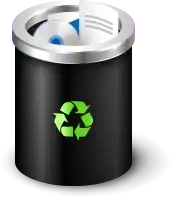Draakra (5e Race)
Draakra
Physical Description
Draakra embody the power of true dragons with the sophistication of humanoids. They are usually large, with well-developed muscular structures and a variety of tough scales that are hardest around the shoulders, spine, and shins. They come in a wide spectrum of matte colors, with darker shades signifying purer dragon blood. They have long, semi-prehensile tails which are around 3/4 the height of the individual and are often used as a weapon. Protruding from their shoulder blades are blade-like plates, covered in the toughest scales. The plates range in size, larger plated individuals usually gaining more respect.
Draakra heads greatly resemble that of true dragons, except with toned down and occasionally mixed traits. Such as a green dragon's sail and a black dragon's curling horns. One thing that differentiates draakra from other similar races are the striking scale patterns that are unique to individuals, swirling wave-like patterns to jagged, lightning streaks. These patterns are always of a contrasting color to the main scales, either a different shade or entirely different color. In family lineages the patterns are always similar, often having a common trend or 'theme'.
History
Eons ago, before the days of humanity, when the elven race was young, there was an immense war between the metallic and chromatic dragons. It was fought on the land, in the skies and beneath the waves throughout the world of Triptychon. The war was so intense that the great dragon gods, Bahamut and Tiamat, sent some of their warriors to fight for their causes. The chromatics, seeing the rise in sentient humanoids wanted to enslave them while they were in their infancy. The metallics desired to instruct, not enslave, the humanoids; in order to direct their development towards peace before they began to war. In the closing days of this war that spanned draconic lifetimes, the chromatics were winning, having conquered vast swathes of the world and enslaving the newly arrived human race. In desperation the metallic dragons held a secret meeting to discuss options; one dragon, a defector from the chromatic side who had her wings removed by her former allies, suggested an alliance with the humanoids. Specifically the elves, dwarves and surviving Dragonborn. It was radical, but it was accepted. The chromatic dragons, blinded by hubris and arrogance, did not believe the tiny mortals a threat until they freed humanity and began killing chromatic leaders. The alliance with the humanoids saved the metallic Dragons, the surviving chromatic dragons either fled or were captured. The majority were captured and fittingly punished. They were cursed to humanoid form; stripped of power, long life and resembling the Dragonborn that were once their slaves they hid away and waited to regain their power. Through many of 'dragon-kin' lifetimes, they watched as humanity, elves, and dwarves grew to become the dominant races. Each race having only a single metallic dragon adviser, albeit disguised in humanoid form. Many descendants of the cursed died of or ended their own lives, but a small few grouped together to find a way to regain their stolen power. This secret society managed to grow to include nearly every surviving 'dragon-kin', they then began rituals to summon fiends and Old Ones to try and restore their power to no avail, until one former servant of Tiamat herself agreed to restore a sizable fraction of their power. They unanimously agreed and regained long life, affinity for magic and minds not unlike true dragons, however, their bodies and minds were scarred. Full body markings and mocking wing-like plates appeared as they gained a thirst for vengeance against those who caused their downfall. They were not dragons nor Dragonborn, so they dubbed their new race Draakra. Now nearly every draakra are villains, criminals or evildoers. Embodying draconic ambition in 'human' form. They act to disrupt, destroy and deface the societies of the beings that cursed them to this lesser form
Society
Draakra society is far different from that of their chromatic dragon heritage, instead of solitary living, they value family and brotherhood as one of their core tenements. Families are organized and behave like small kingdoms with an alpha male leading it, often with titles like Lord or Count. The alpha's mate is then the second most powerful, followed by first-born children than any other children, after that the importance in the family descends as the relation to the alpha becomes more distant. In most cases the family never works against each other, exceptions have occurred, but the main threat from within comes from rival families. The opposing families may be enemies, however, they treat each other with appropriate respect. Draakra are sophisticated in their lives; wearing lavish clothes, having the best weapons and living in grand palaces or castles; they despise the simple and 'barbaric' ways of other dragon-kin like the Dragonborn, seeing themselves as being of higher stature. One thing that is common throughout draakra society is the unbridled dissent towards other humanoids; especially humans, elves and dwarves. Often times draakra enslave people from these races and use for lowly tasks, tasks which they would rather not give their paid servants. Goals of different draakra vary, but a large fraction wants to conquer humanoid kingdoms, often targeting specific groups that affected their direct ancestors.
Names
Draakra, being descendants of dragons, typically have draconic names. Draakra families are a big part of their culture, thus their family name is very important. Family names are also draconic, but they tend to have a meaning such as Sventar'werdian which translates as Killer of the dawn.
Male: Arjhan, Balasar, Bharash, Donaar, Ghesh, Heskan, Kriv, Medrash, Mehen, Nadarr, Pandjed, Patrin, Rhogar, Shamash, Shedinn, Tarhun, Torinn
Female: Akra, Biri, Daar, Farideh, Harann, Flavilar, Jheri, Kava, Korinn, Mishann, Nala, Perra, Raiann, Sora, Surina
Family names: Sventar'werdian, Arcmitne, Gulixen, Naktar'drihliri
Traits
Descendants of cursed dragons who used magic to regain some of their power, at a cost.
Ability Score Increase. Your Strength score increases by 2.
Age. Draakra have long lives, but not as long as their ancestors. They mature around their third decade and can live for nearly a millennium.
Alignment. Draakra, like many dragon-kin, tend towards extremes of law and chaos and due to their resentment, most are evil. But there have been exceptions
Size. Most Draakra stands above 7 feet and tower over most other medium races. You are medium sized.
Speed. Your base walking speed is 30 feet.
Darkvision. You can see in dim light within 60 feet of you as if it were bright light, and in darkness as if it were dim light. You can't discern color in darkness, only shades of gray.
Tail Attack. Draakra tails are heavy and powerful, and thus can be used as a weapon, as a bonus action you may attack with this tail for 1d8 damage.
Draaath. Due to the magic used by their ancestors and interbreeding, their draconic breath weapon is corrupted and of universal type. You may expel a 15 ft cone of breath. Creatures must make a DC 8 + Constitution modifier + proficiency bonus, Dexterity saving throw to take half of the 1d6 fire and 1d6 necrotic damage. This damage increases to 2d6 each when you reach 5th level, and 4d6 at 12th level. You can use it three times and regain use of this feature after you finish a long rest.
Languages. You can speak, read, and write in Common, Abyssal, Draconic, and one other language of your choice.
Subrace. Pick one from Savage or Titan
Savage Draakra
Ability Score Increase. Your Charisma score increase by 1.
Affinity for magic. From increased exposure to magic rituals, you have obtained a natural talent for magic. You may learn two cantrips from the sorcerer spell list, and one spell that can be casted twice day. The spellcasting ability for these cantrips is Charisma.
Titan Draakra
Ability Score Increase. Your Constitution score increase by 1
Draconic Endurance. You have advantage against being knocked prone.
Draconic Feat. You gain 1 additional feat.
Back to Main Page → 5e Homebrew → Races


